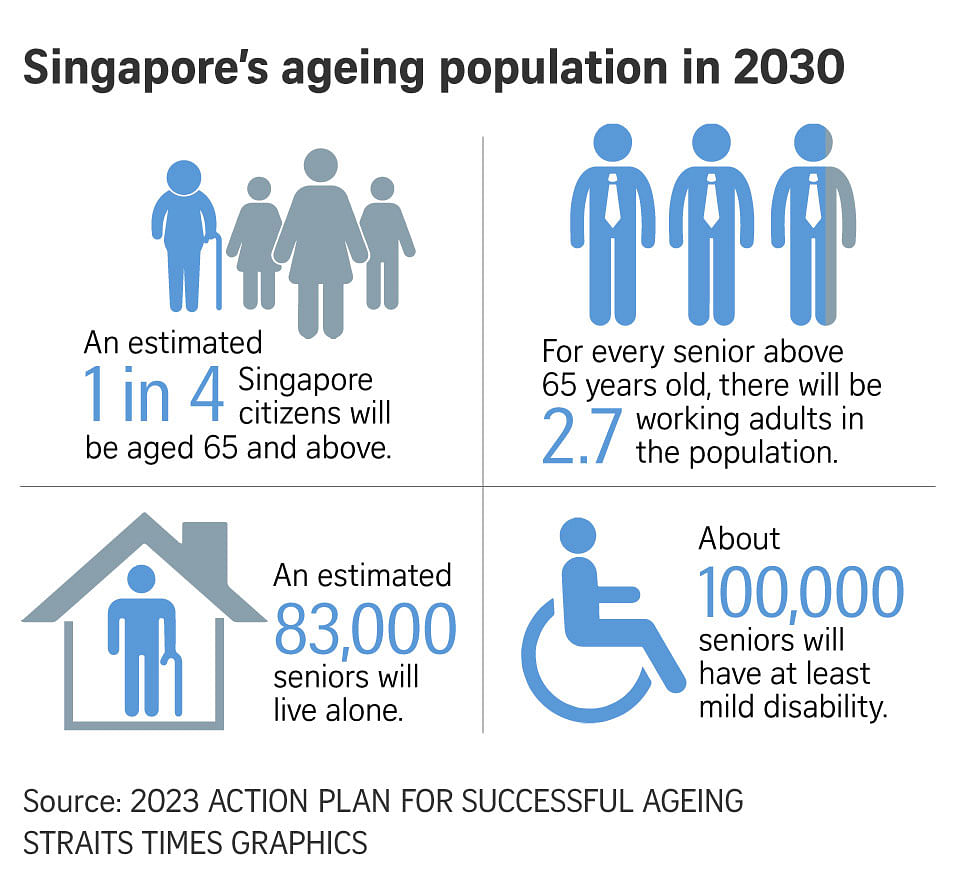2015 Action Plan for Successful Ageing: 7 ways it improved life for seniors
SINGAPORE – Launched in 2015, the $3 billion Action Plan for Successful Ageing is a blueprint to help Singaporeans age confidently and gracefully. The plan includes more than 70 initiatives to help seniors lead active lifestyles.
With the refreshed action plan rolled out on Monday, The Straits Times takes a look at what the 2015 blueprint achieved.
1. National Seniors’ Health Programme
The health education programme, launched in September 2015, educated seniors on key age-related health issues, encouraged them to adopt healthy living habits and brought preventive health services to their doorstep. More than 105,000 seniors have attended health talks and exercise programmes under the initiative.
2. Employment
To encourage the hiring of older workers, the Government supported employers in redesigning jobs for seniors. Under the now-defunct WorkPro, a scheme from 2013 to 2020 to attract older people back to the workplace, various grants were available to companies to relook their workplace practices and processes and jobs. More than 24,000 workers aged 50 and above benefited from the grants given out to more than 2,500 companies.
3. Learning
The National Silver Academy was set up in 2015 to provide a wide range of opportunities for seniors to learn and expand their interests and stay active. Courses are organised by post-secondary education institutions and community-based organisations. More than 99,000 participants aged 50 and above have attended the more than 1,000 courses offered.
4. Transport
The Land Transport Authority implemented a series of measures to make the public transportation system senior-friendly. All public buses are now wheelchair-accessible. All MRT and LRT stations are also barrier-free, allowing seniors to move around more easily.
5. Aged care facilities
To allow seniors to age comfortably and gracefully in the communities where they live, aged care facilities have been expanded. Since 2015, 4,800 places in care centres, the capacity to serve 3,100 home-care clients and 4,900 nursing home beds have been added.
6. Dementia-friendly communities
In a dementia-friendly community, people are aware of the condition and understand how to make their neighbourhoods safe and easy to navigate for those living with the disease. There are also go-to points where residents can take those who appear lost and unable to find their way home. Staff at the go-to points will help reunite these elderly people with their families. Infrastructure has also been made more accessible. For example, steps are replaced with wheelchair-friendly ramps and signs are designed to be clear and easy to read with larger text sizes. Fifteen such communities have been established in neighbourhoods such as Yishun, Bedok and Toa Payoh East.
7. Intergenerational bonding
As at December 2021, 13 senior care centres have been co-located with childcare centres to allow more opportunities for the young and old to interact. More than 33,000 students have also participated in learning programmes with seniors, encouraging intergenerational bonding.

Source: SPH Media Limited. Reproduced with permission.

